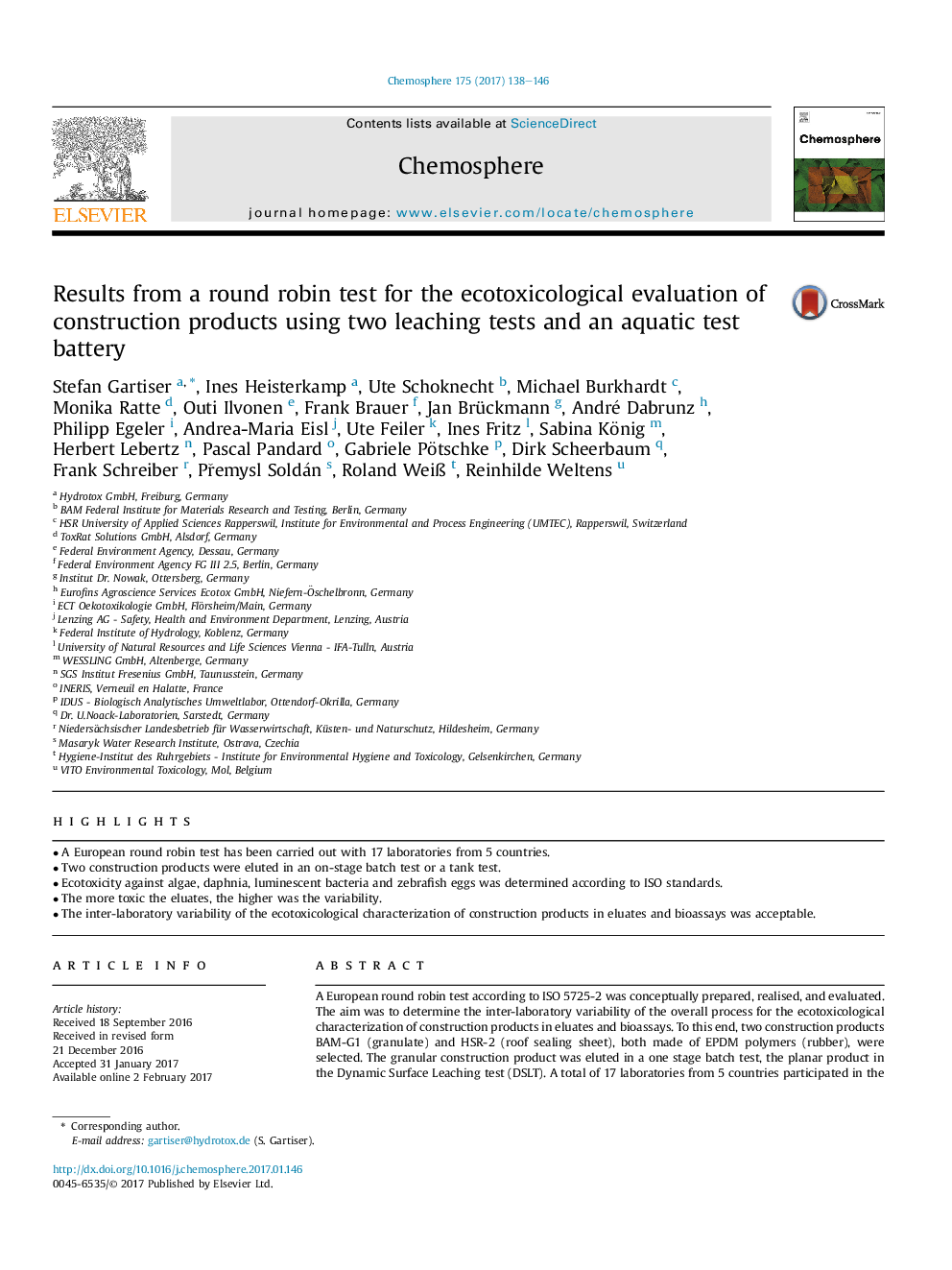| کد مقاله | کد نشریه | سال انتشار | مقاله انگلیسی | نسخه تمام متن |
|---|---|---|---|---|
| 5746494 | 1618796 | 2017 | 9 صفحه PDF | دانلود رایگان |
- A European round robin test has been carried out with 17 laboratories from 5 countries.
- Two construction products were eluted in an on-stage batch test or a tank test.
- Ecotoxicity against algae, daphnia, luminescent bacteria and zebrafish eggs was determined according to ISO standards.
- The more toxic the eluates, the higher was the variability.
- The inter-laboratory variability of the ecotoxicological characterization of construction products in eluates and bioassays was acceptable.
A European round robin test according to ISO 5725-2 was conceptually prepared, realised, and evaluated. The aim was to determine the inter-laboratory variability of the overall process for the ecotoxicological characterization of construction products in eluates and bioassays. To this end, two construction products BAM-G1 (granulate) and HSR-2 (roof sealing sheet), both made of EPDM polymers (rubber), were selected. The granular construction product was eluted in a one stage batch test, the planar product in the Dynamic Surface Leaching test (DSLT). A total of 17 laboratories from 5 countries participated in the round robin test: Germany (12), Austria (2), Belgium (1), Czech Republic (1) and France (1). A test battery of four standardised ecotoxicity tests with algae, daphnia, luminescent bacteria and zebrafish eggs was used. As toxicity measures, EC50 and LID values were calculated. All tests, except the fish egg test, were basically able to demonstrate toxic effects and the level of toxicity. The reproducibility of test results depended on the test specimens and the test organisms. Generally, the variability of the EC50 or LID values increased with the overall level of toxicity. For the very toxic BAM-G1 eluate a relative high variability of CVÂ =Â 73%-110% was observed for EC50 in all biotests, while for the less toxic HSR-2 eluate the reproducibility of EC50 varied with sensitivity: it was very good (CVÂ =Â 9.3%) for the daphnia test with the lowest sensitivity, followed by the algae test (CVÂ =Â 36.4%). The luminescent bacteria test, being the most sensitive bioassay for HSR-2 Eluate, showed the highest variability (CVÂ =Â 74.8%). When considering the complex overall process the reproducibility of bioassays with eluates from construction products was acceptable.
Journal: Chemosphere - Volume 175, May 2017, Pages 138-146
